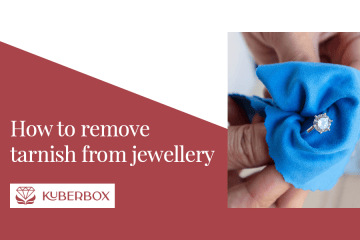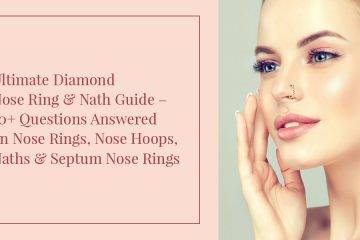A Wide Variety of Blues
Sapphires Sapphires Sapphires! These precious stones are one of the most brilliant varieties of coloured stones available on the market. Both durable and stunning they tend to meet every woman’s expectation when it comes to beauty. But don’t be restricted to only sapphires, there are many other blue gemstones that can set the blues right. Well-budgeted, blue gemstones can even give you the value you might be looking for when buying fine jewellery.
Through this blog we will cover the different types and varieties of blue stones that have their own niche market and could be exactly what you are looking for to step away from the conventional set of gems.
Have you heard of Iolites? The stone gets its name from the Greek word “ios”, meaning violet, which can be used interchangeably for a stone displaying two different colours. Known for its iconic inky blue body colour, each gemstone must be cut with immense patience and insight because of its trichroic crystal structure. This means that the stone displays different colours in different angles, with the strongest being dark blue or violet blue to a shade of grey and then brown.
#Trivia : Iolite was used during the times of the Vikings as it enabled travellers to view the sun directly through the gemstone thus giving exact locations and facilitating navigation. The stone acted like a polarising filter that was perfectly oriented in the axis of the sun.
Iolite is part of the species Cordierite that is used today as an electrical insulator and in heating implements. This gemstone with numerous inclusions can display aventurescence and even chatoyancy, which can sometimes be prized in good colours.
Aquamarines are another gemstone you should be looking at, because of its coloeur de l’eau. When light touches the surface of these gemstones they appear as if diamonds have been scattered upon water. Aquamarines are a close relative to the Emerald variety and hence share plenty of the same internal characteristics. A cheaper and yet stunning alternative to the usual blue, seen in sapphires, these stones have the subtle colour of a perfectly sunny blue sky, perhaps just what you are looking for.
These light blue stones do not only look fabulous with yellow gold but in white gold as well. This is because the cool colours tend to be more pronounced when stones are set in white gold.
Topaz is another crowd favourite. Although it comes in many different colours, its Sky blue or London blue colour has taken to the masses. Its subtle blue colour is like the colour of water, in fact very similar to the aquamarine variety. This gemstone is known for its soothing properties and comes naturally in a pale to light blue colour. Most stones are treated to give it the London deeper blue colour that is now available on the market.
Topaz is a stone that is fairly eye clean and can also come in larger sizes which is its main distinguisher between aquamarines and topaz. This makes the gemstone ideal for cocktail and statement jewellery and with a relatively high hardness at 8 on the Moh’s scale the lustre of the stone is also pretty good. Perfect for daily wear in rings and earrings even bracelets fro that matter.
Tanzanites are another one of our preferred stones as they have a soothing violetish blue body colour. Tanzanites are a very rare variety of gemstone found only in the Merelani Mines in Tanzania located in Africa. What’s even better most of the stones are shipped to India to the city of Jaipur, where they are cut and polished and then shipped to different parts of the world.
#Trivia: Think you have heard the name tanzanite before? Of course you have, the legendary movie Titanic starring Kate Winslet and Leonardo DiCaprio features the gem in all its glory. The heart shaped gem that Kate Winslet casts into the sea is one of the best quality Tanzanites that was seen during that time.
Most tanzanites available on the market today, are heated in some form to improve the colour of the gem and to give it the violetish blue colour. Accepted by the trade, treated Tanzanites are now a stone in popular demand and can come in a variety of price ranges to meet differing client requirements.
Looking for a greenish-blue colour stone inspired by the sea? Apatite is the ideal stone for you. Its marine colours can almost leave you craving a visit to the beach and longing for some delicious seafood. The stones low hardness at 5 on the mohs scale is often used as an index mineral to indicate the different hardness of other gemstones.
#Trivia: Apatite has a high phosphorous content in its chemical composition, which is the primary reason for it being mined. It is thus used in great amounts as a fertiliser.
As mentioned, the gemstone is very soft and can be scratched by a sharp steel knife. Nonetheless there is still a growing demand for these gems because of the natural desirable colours of the gemstone.
Surely you have also seen some breath-taking opaque stones. Although opaque, they can still do justice to almost any jewellery piece because of the rich colours of the stones.
Lapis Lazuli is one of my favourite stones. Even though it is opaque, its royal indigo blue colour can leave you longing for a jewellery piece studded with lapis. Speckled with pyrite, a is a gemstone on its own accord, it resembles the night sky freckled with stars. No doubt why lapis lazuli resonates with royalty.
The unmatched colour has been referred to “ultramarine” which translates to “beyond the sea” with the depths of an indigo ocean. Lapis is often seen in the Egyptian jewellery and in signet rings from the time of Alexander the great.
The best source for these stones is from the mountains in Afghanistan with a deep blue and a smaller presence of pyrite. Russian sources for this gem tend to have different blue colours and a higher proportion of pyrite seen through he stone. A clear indication to why the stone has also been associated to having magical and mystical powers.
#Trivia: Lapis has been used as a pigment in historic times because of its rich colour, to colour walls and paintings.
One of the other very popular opaque blue stones is Turquoise. Often cut as cabochons and as flat pieces the gemstone is a hot favourite in inlay work used all over the world. Turquoise gets its name from the French word meaning Turkish as the first stones were brought from Iran through Turkey.
If you have visited the Indian wonder of the world, the Taj Mahal, you will know what inlay work is. Your guide will surely tell you about the different gemstones that were used to decorate the wall of this white wonder one of which was turquoise. Stolen over the years, the Taj is now restored although with Malachite, Carnelian and Onyx.
Now that we have taken you through a myriad of options when it comes to blue stones, don’t let Sapphires cloud your vision. You now know there is a wide variety of stones out on the market that could and perhaps should be your next preferred choice of stone.
http://geology.com/minerals/apatite.shtml
http://gems-inclusions.com/inclusions-photo-gallery/by-included-mineral/hematite-inclusions/
A Wide Variety of Blues by Chantelle







1 Comment
Sunny Diamonds · December 16, 2015 at 4:58 pm
Most of the diamond lovers love to choose blue color stones. Nice collections.